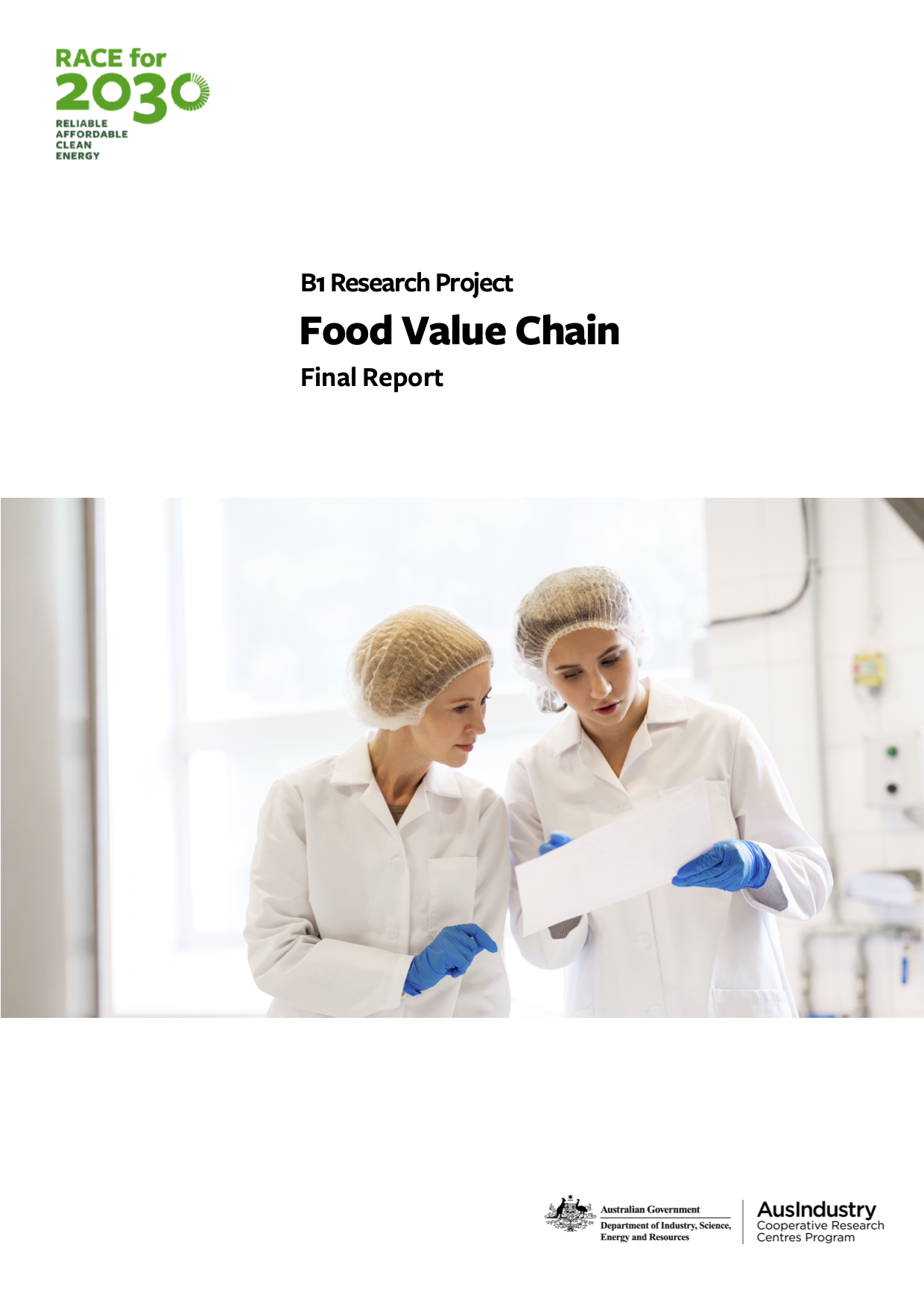A new report has been released that explores the ways that energy productivity improvement could address challenges faced by the food value chain, such as climate change, increasing costs, disruptive innovation and extreme competition, by saving energy and indirectly by delivering multiple business benefits, especially through collaborative action across the value chain.
A consortium comprising the Australian Alliance for Energy Productivity (A2EP), Agrifutures, Climate-KIC Australia and the University of Technology Sydney (UTS), conducted extensive research on behalf of the RACE for 2030 CRC to assess energy productivity within the food value chain.
The food sector is responsible for about 30% of global energy consumption and is the largest user of land on the planet. Energy is heavily involved in growing, processing, packaging, distribution, storage, preparation, serving, and disposal in the food value chain.
The project team explored the nature of food value chains, major emerging drivers and energy-related measures, and technologies that could be applied within and along value chains. Interviews were conducted with key stakeholders in Australia’s food value chain, with insights integrated from these engagements along with research findings and the Systems Innovation Research model. The outcomes of these consultations formed the basis for recommendations on further action.
The project applied three core elements:
- Focus on energy productivity, not just energy efficiency: energy productivity focuses on energy-related actions that add business value (in ways that may not immediately seem to be related to energy) for each unit of energy
- Focus on value chains that consider inputs, supply chain participants and end-consumers, and their shared interests and interdependencies.
- Application of a Systems Innovation Research model that reflects the complexities and interrelationships between elements involved in driving change, highlighting interdependencies, exchanges and flows between value chain participants to provide a new means for optimising systems level.
Key findings:
- Priorities varied across food value chain stakeholders but included reducing food waste, packaging, increasing renewable energy, the climate impacts of refrigerants and cost/profit issues.
- Although substantial research and innovation is taking place to reduce emissions in the food sector, this is occurring mostly at the individual company or industry levels, rather than across the entire value chain.
- Some groups are working more broadly with life cycle assessment, supply chain projects, etc. Most of the focus is on food waste or process-specific areas in an individual business.
- Emerging issues with the potential to justify more attention on energy productivity and collaboration that were identified included: increasingly ambitious decarbonisation commitments and obligations, circular economy industrial models, digitalisation and connection, and driving demand from consumers, investors and government for environmental performance.
- There are opportunities to build on or complement existing work by applying an ‘energy productivity lens.’
- There are significant challenges in finding resources to pursue energy productivity.
- Energy efficiency and productivity are seen as important within the industry, but not a high priority, although there is support for industry leadership and government support.
- Most businesses focus on their own business, suppliers and customers, which potentially allows for inefficiencies to occur.
Recommendations
The report emphasises the significance of collaboration across the value chain and the value of systems change in driving energy productivity improvement. It calls for resource allocation, collaboration, and the integration of energy productivity into existing activities to expand its scope and impact. The report proposes the creation of a consortium, supported by government and industry funding, to lead this transformative effort and set a roadmap for continuous systems innovation.




